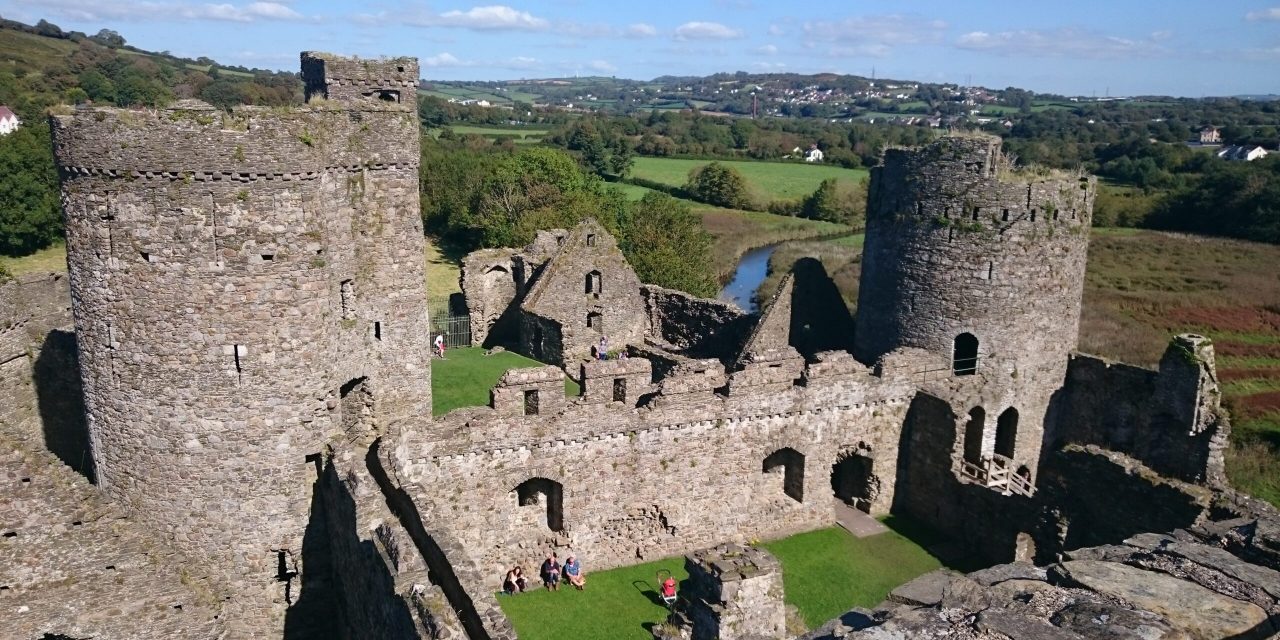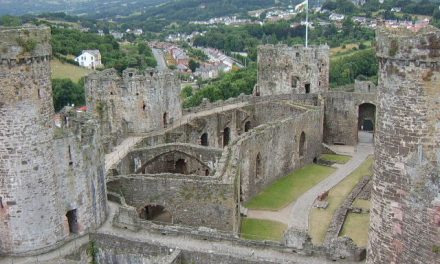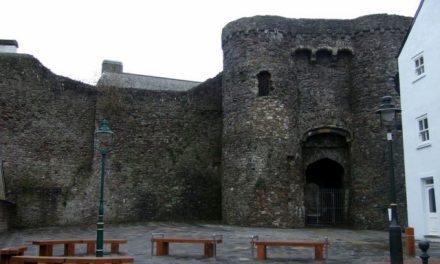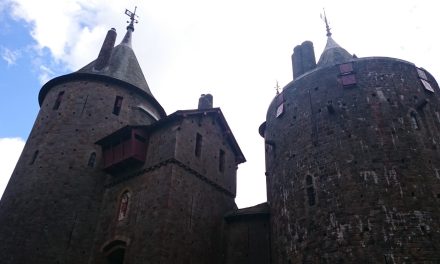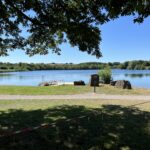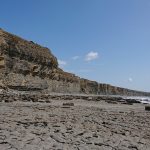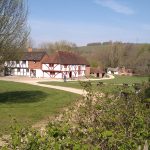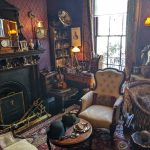If you are looking for a new castle to visit, then you might want to consider taking a look at Kidwelly Castle. This is a castle that is rich with history, and visiting what remains of this castle makes for an excellent day out.
If you are thinking of going to this castle, you might be wondering more about its history, which is something that we are going to explore in this article. We are going to take a look at when this castle was first built and what happened here at different points in time. Just keep reading to find out more.
What to expect from our article
- 1 When Was Kidwelly Castle Built?
- 2 Who Built Kidwelly Castle?
- 3 Why Was Kidwelly Castle Built?
- 4 Who Owned Kidwelly Castle?
- 5 What Type of Castle is Kidwelly?
- 6 What Was Kidwelly Castle Built For?
- 7 Is There a Plan for Kidwelly Castle?
- 8 Are Dogs Allowed in Kidwelly Castle?
- 9 How Much is Admission to Kidwelly Castle?
- 10 Is Kidwelly Castle Haunted?
When Was Kidwelly Castle Built?
Kidwelly Castle was first built in the early 12th century as a Norman ringwork castle that was made of wood and only protected by an earthen bank and ditch. This is why it is not surprising that it was constantly under attack by Welsh princes, including Lord Rhys, who managed to capture the castle in 1159.
Who Built Kidwelly Castle?
Kidwelly Castle was actually built by Roger, Bishop of Salisbury on behalf of Henry I. The purpose of the castle was to enforce the power of the Marcher Lords and entrench Anglo-Norman control of South West Wales. The fortification was regularly upgraded, which enabled it to withstand a fierce assault and sustained siege during the Owain Glyndwr rebellion.
Why Was Kidwelly Castle Built?
Kidwelly Castle was built soon after King Henry I granted the Welsh lands of Cydweli to Bishop Roger of Salisbury in 1106. The castle originally consisted of an earthen bank and a timber palisade with one or more gates. Inside the castle, there would have been wooden domestic buildings and maybe even a stone wall.
The castle was one of several that was established by the Normans to assert control over the kingship of Deheubarth in South-West Wales. It was situated to control coastal traffic and to protect the important River Gwendraeth.
Who Owned Kidwelly Castle?
Kidwelly Castle was originally built for Roger, Bishop of Salisbury, as the centre of a significant lordship that comprised the commote of Cydweli. The castle was held by the family until 1216, but there were periods in between when the castle was in welsh hands, following on from its capture.
In the 1160s, the castle was held by Lord Rhys (Rhys ap Gruffudd), and it is thought that the earliest surviving piece of masonry in the outer curtain wall may date to this time. In the early 13th century, the castle passed to the Chaworth family, and in 1283, the king granted Kidwelly Castle to William de Valence, Earl of Pembroke.
When he died in 1296, ownership of the castle reverted to the Chaworth heiress, Matilda, who married Henry, Earl of Lancaster in 1345. The castle later passed to John of Gaunt, Earl of Lancaster in 1362.
What Type of Castle is Kidwelly?
Kidwelly Castle is a Norman castle that overlooks the River Gwendraeth and the town of Kidwelly, Carmarthenshire in Wales. Originally, this castle consisted of an earthen bank and a timber palisade, and it would have had one or more gates. Inside the castle, there would have been cosmetic buildings and perhaps a stone-built hall.
The castle is listed as a Grade I building, and it is considered to be one of the finest castles in Wales. The castle consisted of a D shaped ringwork that was made from earth and timber. The southwest section would have been home to the small medieval walled borough, and the castle gardens occupied the northeast section of the castle. Unfortunately, no trace remains of the original castle buildings.
The Inner Ward
The inner square ward of the castle was the first phase of building work that was carried out by the Chaworth family. It featured a circular tower in each corner, and it is thought to have been completed by 1283, when the king came to stay for a few days. The existing hall and chapel were built slightly bigger than the original buildings.
The Outer Ward
The outer ward of the castle was built between 1270 and 1290, and it consisted of a D shaped enclosure with both north and south gates. There were also three D shaped towers. It is thought that William de Valance continued building work in the late 13th century.
Outer Curtain Wall
The outer curtain wall was rebuilt around the year 1300, and only part of the central section was retained. The remains of this can be seen from the tower that is closest to the great gatehouse to the north gate and adjacent tower, where it meets the inner ward’s north tower.
Building Work in the Late 14th Century
By the late 14th century, a new hall with solar was being built along the inner ward’s east side. They also created a new kitchen opposite. The chapel was also built around this time, in a tower projecting down the scarp below the southeast tower. The towers and curtain walls of the outer tower had their tops raised during this time, and the northeast and west towers of the inner ward were also heightened.
It is highly likely that the court walls were never visible from outside the castles, as they would have been overshadowed by the outer wall. This in itself would have impacted the visual and symbolic impact of the four great towers. The castle was maintained into the 16th century.
What Was Kidwelly Castle Built For?
Kidwelly Castle was constructed as a way to enforce power and control in Wales, but it also served as a battleground for both Normans and the Welsh revolting against their rule in South Wales.
Is There a Plan for Kidwelly Castle?
The plan of the castle consists of a square inner bailey that is defended by four round towers that overlook a semi-circular outer curtain wall on the landward side. The plans also show an impressively large gatehouse next to the river, and the river is actually what prevents this from being a truly concentric plan. However, a jutting tower is in place to protect the riverside walls, and the final plan is very strong.
Are Dogs Allowed in Kidwelly Castle?
You can take your dog to Kidwelly Castle if you keep them on a lead. However, you should know that you can only take them to explore the ground floor levels of the site.
How Much is Admission to Kidwelly Castle?
Admission to Kidwelly Castle is relatively inexpensive in comparison to some other castles, but we will leave a full price list for you to browse below.
Cadw Member – Free
Adult – £5.40
Family – £18.00
Disabled and Companion – Free
Juniors (Aged 5-17) – £3.90
Armed Forces and Veterans/NUS – £3.90
Seniors – £5.05
A family ticket includes 2 adults and up to 3 children, and all children under the age of 5 will receive free admission.
Is Kidwelly Castle Haunted?
It is thought that a headless ghost roams the ruins of Kidwelly Castle, and those that have spotted this grey-robed figure say that it is Gwenllian, the warrior princess of Wales. It is thought that after a battle that took place at the castle, the Normans beheaded Gwenllian, and her restless spirit has remained at Kidwelly Castle ever since.
Gwenllian was born in 1100, and she was the daughter of Gruffudd ap Cynan, the Prince of Gwynedd. She is often described as beautiful with fiery red hair, educated, and feisty, and she was taught to wield a sword.
At age 13, Gwenllian was married to the lord of Deheubarth, Gruffudd ap Rhys. They had four sons together, who were called Morgan, Maelgwyn, Maredudd, and Rhys. However, the constant threat of the Normans was still lingering.
The death of Henry I in 1135 created an opportunity for the Welsh to take back their independence, and the Welsh Lords marched to the Gower, hoping to recover their lost lands. The battle was successful, with the opposing side fleeing to the safety of Kidwelly Castle.
This presented yet another opportunity for Gruffudd and Gwenllian to storm the castle and end the battle once and for all. However, they lacked the power to do so, and so Gruffudd travelled north to ask Gwenllian’s father for help. Gwenllian supervised Deheubarth in his absence.
However, those that remained within the safety provided by the walls of Kidwelly Castle also had outside resources to rely on. Word made it back to Gwenllian in Gruffudd’s absence that those at Kidwelly Castle had received new enforcements that presented a new threat.
In the year 1136, Gwenllian, along with her eldest sons, summoned the menfolk to her. She was greeted by two hundred labourers that were armed with anything that they could get their hands on.
Along with one local chieftain, Gruffudd ap Llewelyn, she decided to split their forces outside of Kidwelly Castle, with her half sealing the road that brought supplies to the castle, and the other half guarding the shore.
What Gwenllian was not expecting was the ultimate betrayal that came next. Gruffudd ap Llewelyn was led astray by the temptation of a life of luxury, and he revealed the princess’s position to the opposition.
She was surprised with an ambush at Maes Gwenllian, or Gwenllian’s Field, and the fight was bitter and short. Gwenllian witnessed her son, Morgan, hacked to death trying to protect his mother. The Normans dragged her to the ground to their leader, Maurice, who cut off her head. However, this ordeal only added fuel to the fire.
The Welsh were outraged at Gwenllian’s execution. Gwenllian’s husband and father, united in grief, hurled their forces against Ceredigion and Cardigan, and Iorwerth ap Owain in Gwent rose up against the de Clare’s.
These battles continued for decades, and Gwenllian’s younger son, Rhys, grew up to become one of the greatest names in Welsh history: The Lord Rhys.

